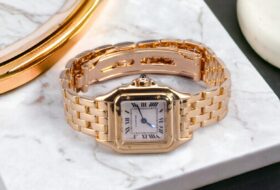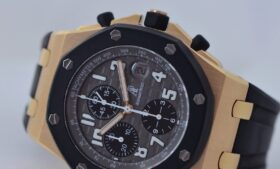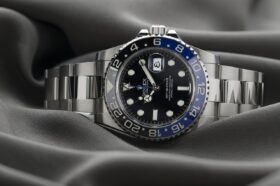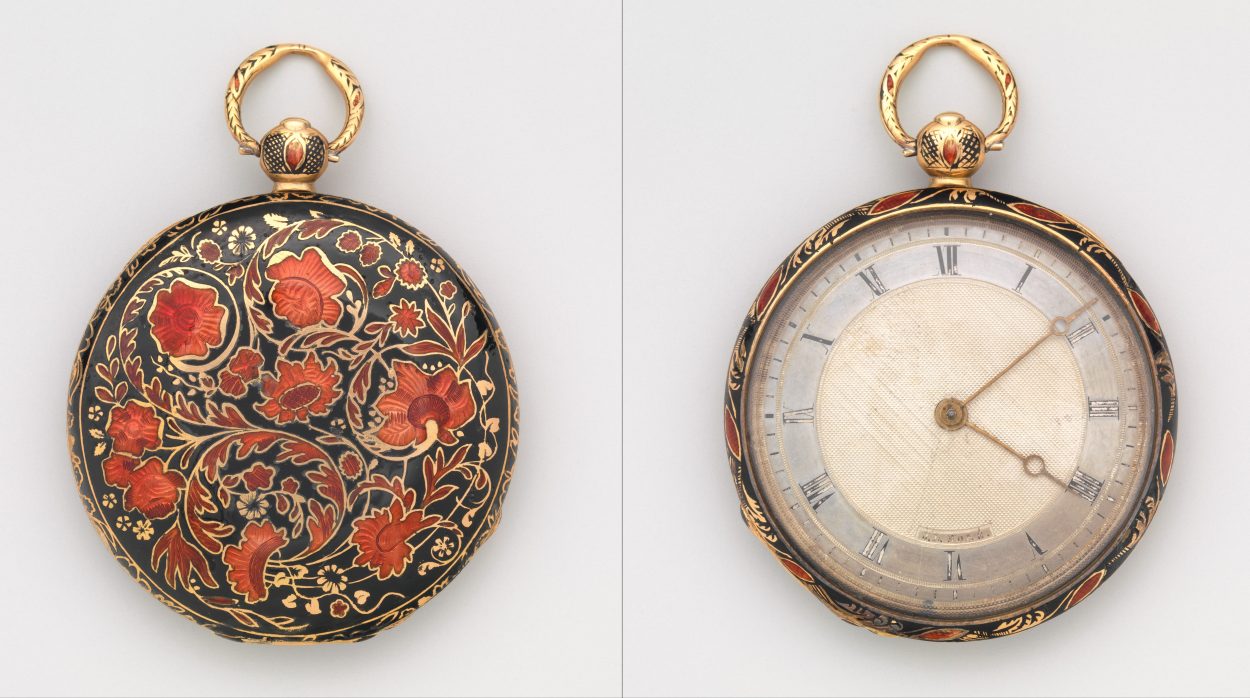
08 Oct A History of Watches for San Diego Watch Enthusiasts
As San Diego watch buyers, C. Blackburn Jewelers deals exclusively in collectable timepieces from luxury watch brands such as Rolex, Patek Philippe, Omega, and Audemars Piguet. We also buy ladies watches set with diamonds made by luxury jewelers like Tiffany & Co., Harry Winston, and Chopard.
Needless to say, we are passionate about the history of fine watchmaking. And we love to share with clients what we know (or can discover) about their particular timepiece. For San Diego watch enthusiasts who are just diving into the world of high-precision, mechanical watches, here is a history to help you begin further exploration.

15th – 16th Century: The Birth of Watchmaking
The 15th and 16th centuries mark the birth and early evolution of fine watchmaking. This era saw the emergence of portable clocks, the introduction of spring-powered mechanisms, and the development of key components like the balance spring and escapement.
1. Emergence of Portable Clocks:
The 15th century saw the advent of portable clocks, a precursor to modern watches. One of the pioneering figures in this development was Peter Henlein, a skilled German locksmith. Around the year 1505, he is credited with creating the first portable watch, laying the foundation for the portable timepieces we use today.
2. Spring-Powered Mechanism:
A significant leap in watchmaking occurred with the introduction of the mainspring in the 16th century. Crafted from a coiled wire of special alloy, the mainspring replaced the weights used in earlier clocks. This innovation, often attributed to an anonymous craftsman, made watches more portable and convenient, ushering in a new era of timekeeping.
3. Personalized Timepieces:
As watches gained popularity, they became fashionable accessories, adorned with intricate engravings and jewels. Notable among the craftsmen of this era was Julien Coudray, a skilled French watchmaker renowned for crafting personalized, luxurious timepieces for royalty and the elite. His work exemplified the fusion of functionality and artistic expression in watchmaking.
4. Watchmaker Guilds and Geneva’s Influence:
The 15th and 16th centuries also witnessed the establishment of watchmaker guilds in various European cities. These guilds played a crucial role in promoting standardized quality and sharing essential skills among craftsmen. Geneva, Switzerland, emerged as a prominent center for watchmaking, eventually becoming synonymous with precision and quality. The city’s legacy as a hub for horological craftsmanship began during this period, setting the stage for the Swiss watch industry’s future dominance.
5. Miniaturization and Decorative Arts:
Advancements in miniaturization techniques allowed for the creation of smaller, more delicate watches. Additionally, the integration of decorative arts, such as enamel-work and gem-setting, became integral to fine watchmaking. These embellishments not only enhanced the aesthetic appeal of timepieces but also showcased the artisan’s creativity and craftsmanship.
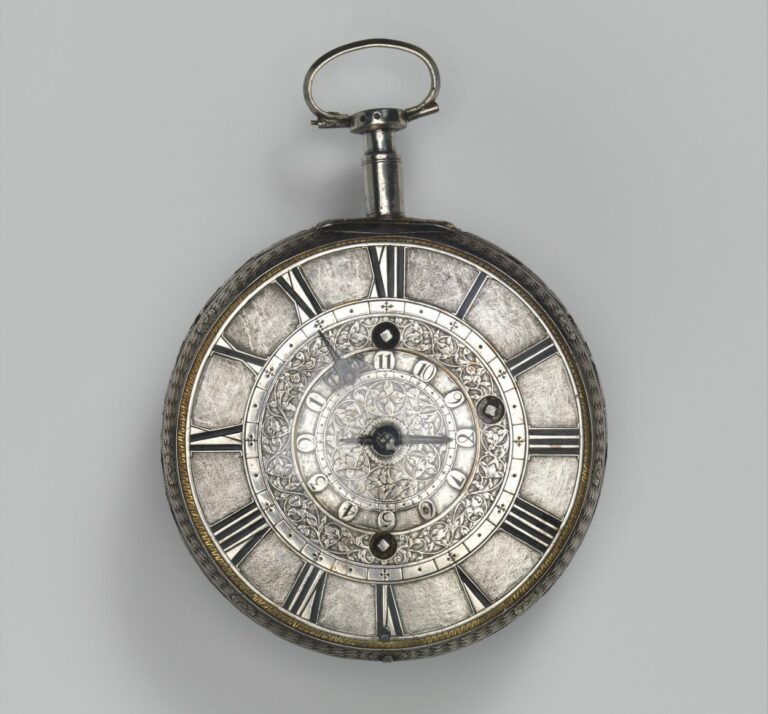
17th Century Watchmaking: The First Master Horologists
The 17th century witnessed a flourishing period for horology, characterized by significant advancements in watchmaking technology and design. This era saw the refinement of existing mechanisms, the establishment of renowned watchmaking centers, and the emergence of skilled artisans, all contributing to the evolution of timekeeping devices.
1. Pendulum and Improved Accuracy:
One of the most groundbreaking developments in the 17th century was the introduction of the pendulum by Dutch scientist Christiaan Huygens in 1656. The incorporation of the pendulum greatly enhanced the accuracy of timekeeping devices, leading to the creation of more precise and reliable clocks.
While not applied to watchmaking, this invention laid the foundation for the pendulum clock, a significant advancement in horology. It also inspired Christiaan Huygens to continue his exploration of timekeeping, as he subsequently developed and patented the first pocket watch.
2. Balance Spring Enhancements:
Building upon the innovations of the previous century, watchmakers in the 17th century made refinements to the balance spring and escapement mechanism. These improvements further increased the accuracy of watches and clocks, making them indispensable tools for various applications, including navigation and astronomy.
3. Watchmaking Centers and Artisan Communities:
The 17th century witnessed the establishment of specialized watchmaking centers in cities like London, Paris, and Geneva. These cities became hubs of horological innovation, fostering a sense of community among skilled artisans. Watchmaking guilds continued to play a crucial role in maintaining high standards of craftsmanship and sharing knowledge, contributing to the overall progress of the industry.
4. Scientific Collaboration and Innovation:
The 17th century saw increased collaboration between watchmakers and scientists. Innovations in metallurgy and engineering techniques allowed for the production of more durable and precise components. This collaborative spirit between craftsmen and scientists led to the development of sophisticated astronomical and marine chronometers, laying the groundwork for future advancements in precision timekeeping.
5. Aesthetic Elegance and Decorative Techniques:
Alongside technical innovations, the 17th century also marked an increased focus on aesthetic elegance in watch design. Watchmakers became more accomplished at incorporating enamel-work, intricate engravings, and gem-setting, transforming timepieces into exquisite works of art.
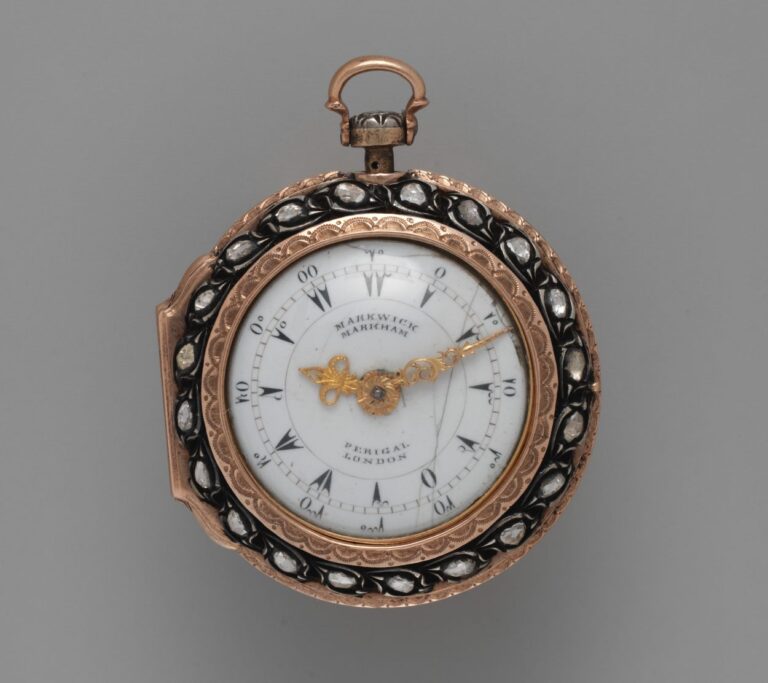
18th Century Watchmaking: The Golden Age of Horology
The 18th century is widely regarded as the golden age of horology, marked by unprecedented advancements in watchmaking craftsmanship and technology. This era witnessed a surge in innovation, leading to the creation of highly sophisticated timepieces. From refined mechanical mechanisms to exquisite artistic embellishments, the 18th century played a pivotal role in shaping the modern watchmaking industry.
1. Precision Engineering and Escapement Innovations:
The 18th century saw remarkable advancements in precision engineering. Watchmakers honed their skills in crafting intricate escapements, ensuring the accuracy and reliability of timepieces. Innovations like the lever escapement, developed by English watchmaker Thomas Mudge, greatly improved the efficiency and precision of watches, setting new standards for the industry.
2. Introduction of Complications:
Watchmakers in the 18th century introduced various complications, adding additional functions to timepieces. This period witnessed the creation of watches with calendar functions, moon phases, and chronograph capabilities. These complications showcased the technical prowess of watchmakers and catered to diverse user needs, further enhancing the appeal of watches.
3. Mass Production and Standardization:
The 18th century saw the emergence of mass production techniques in watchmaking. Skilled artisans and craftsmen collaborated to produce standardized components, enabling the assembly of watches on a larger scale. This shift towards mass production made watches more accessible to a broader audience, transforming them from luxury items to everyday accessories.
4. Rise of Decorative Arts:
Artistic expression reached new heights in the 18th century as watchmakers embraced elaborate decorative techniques. Enamelwork, guilloché patterns, and intricately designed cases became hallmarks of watches from this period. Notable artisans like Jean-Georges Rémond and James Cox were renowned for their exquisite craftsmanship and decorative styling.
5. Global Expansion and Cultural Influence:
The 18th century witnessed the global expansion of watchmaking, with European horological techniques influencing craftsmen in Asia and the Americas. Watchmaking centers in Switzerland, France, and England exported their expertise, leading to the establishment of thriving watchmaking communities worldwide. This exchange of knowledge and skills contributed to the diversification and enrichment of horological traditions.
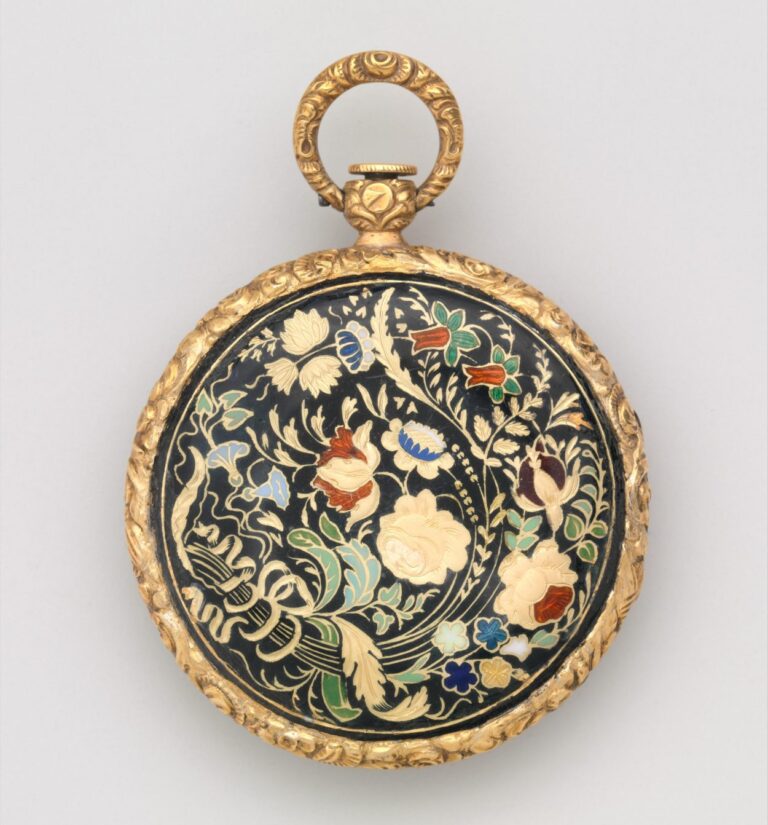
19th Century Watchmaking: A Horology Renaissance
The 19th century heralded a period of unprecedented transformation and innovation in the realm of watchmaking. With the Industrial Revolution in full swing, this century witnessed the convergence of traditional craftsmanship and modern mechanization, leading to the production of intricate, reliable, and widely accessible timepieces.
1. Industrial Revolution and Mass Production:
The Industrial Revolution revolutionized watchmaking, introducing mechanized production techniques. Mass production became possible through standardized components and assembly lines, making watches more affordable and accessible to a broader spectrum of society. Innovations like interchangeable parts streamlined the manufacturing process, setting the stage for the modern watch industry.
2. Advancements in Materials and Durability:
The 19th century saw the adoption of new materials, enhancing the durability and precision of timepieces. Improved alloys for springs and balances, along with the use of jewels for bearings, significantly increased the longevity and accuracy of watches. These advancements laid the foundation for the reliable and resilient watches of the future.
3. Expansion of Complications and Specialized Watches:
Watchmakers in the 19th century continued to innovate with complications, introducing features like perpetual calendars, minute repeaters, and chronographs. Specialized watches, tailored for specific activities such as diving, aviation, and exploration, emerged during this period. These watches catered to the growing demands of professionals and enthusiasts, showcasing the versatility of horological craftsmanship.
4. Establishment of Swiss Watchmaking Dominance:
Switzerland emerged as a powerhouse in the watchmaking industry during the 19th century. The Swiss lever escapement, perfected by Abraham-Louis Breguet, became the standard for accuracy and reliability. Swiss watchmakers set high standards for quality and craftsmanship, leading to the establishment of renowned Swiss watchmaking houses that continue to dominate the market today.
5. Rise of Wristwatches and Women’s Timepieces:
The 19th century witnessed the gradual transition from pocket watches to wristwatches. Initially popularized among women as ornamental jewelry pieces, wristwatches gained acceptance among men, especially during military campaigns where their practicality became evident. This shift revolutionized the way people carried and accessed time, shaping modern fashion and lifestyle trends.
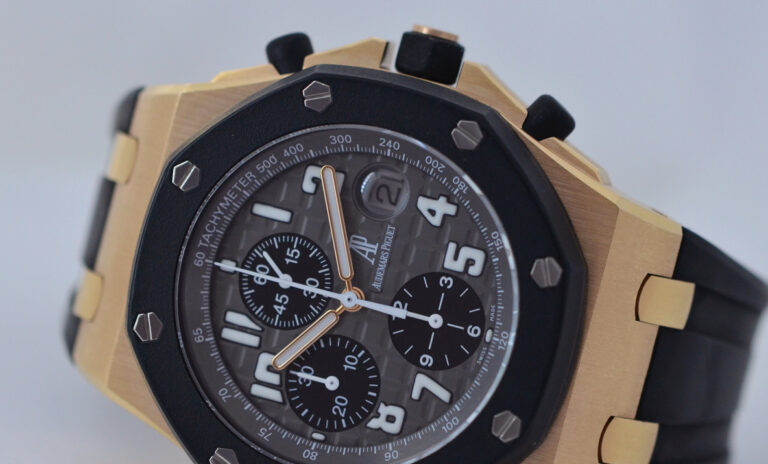
20th Century Watchmaking: A Technological Revolution
Once again, watchmaking underwent a revolutionary transformation in the 20th century, with new technological advancements, innovative designs, and the emergence of iconic watch brands. The continued fusion of traditional craftsmanship with cutting-edge technology lead to the creation of highly accurate, durable, and stylish timepieces.
1. Quartz Revolution and Precision Timekeeping:
The 20th century saw the advent of the quartz revolution, which began in the 1960s. Quartz technology, utilizing the vibrations of a quartz crystal to regulate time, vastly improved accuracy and eliminated the need for mechanical winding. Swiss engineer Max Hetzel and Japanese companies like Seiko played pivotal roles in popularizing quartz movements, leading to the production of affordable and precise quartz watches that became widely accessible.
2. Mechanical Innovations and Automatic Movements:
Despite the rise of quartz technology, mechanical watchmaking continued to evolve. The 20th century witnessed innovations such as automatic movements, where the motion of the wearer’s arm winds the watch. Swiss manufacturers like Rolex and Omega introduced automatic movements, combining traditional craftsmanship with modern engineering, ensuring the survival and relevance of mechanical watches.
In addition, the Hamilton Watch Company, an American watchmaker, introduced the hacking seconds function during World War II. This feature allowed the seconds hand to stop when the time was being set, ensuring precise synchronization among military personnel. This feature was subsequently introduced to regular luxury timepieces as well.
3. Iconic Designs and Cultural Significance:
The 20th century saw the emergence of iconic watch designs that became cultural symbols. Timepieces like the Rolex Submariner, Omega Speedmaster, and Audemars Pguet Royal Oak achieved legendary status, representing both technical excellence and aesthetic appeal. These watches became associated with achievement, adventure, and luxury, shaping fashion trends and popular culture.
4. Digital Revolution and Smartwatches:
The latter half of the 20th century witnessed the digital revolution, leading to the development of electronic and digital watches. Pioneered by companies like Casio, digital watches introduced features like alarms, calculators, and digital displays. In the 21st century, the rise of smartwatches, led by companies like Apple and Samsung, integrated advanced computing capabilities, health tracking, and communication functions, redefining the concept of a wristwatch in the digital age.
5. Globalization and Diverse Styles:
The 20th century marked an era of globalization in watchmaking. Swiss, Japanese, American, and German watch manufacturers, among others, became globally recognized. This diversity in origins led to a wide array of styles and designs, catering to varied tastes and preferences worldwide. Traditional craftsmanship, combined with innovative materials and techniques, resulted in a rich tapestry of watch styles, from minimalist elegance to avant-garde designs.
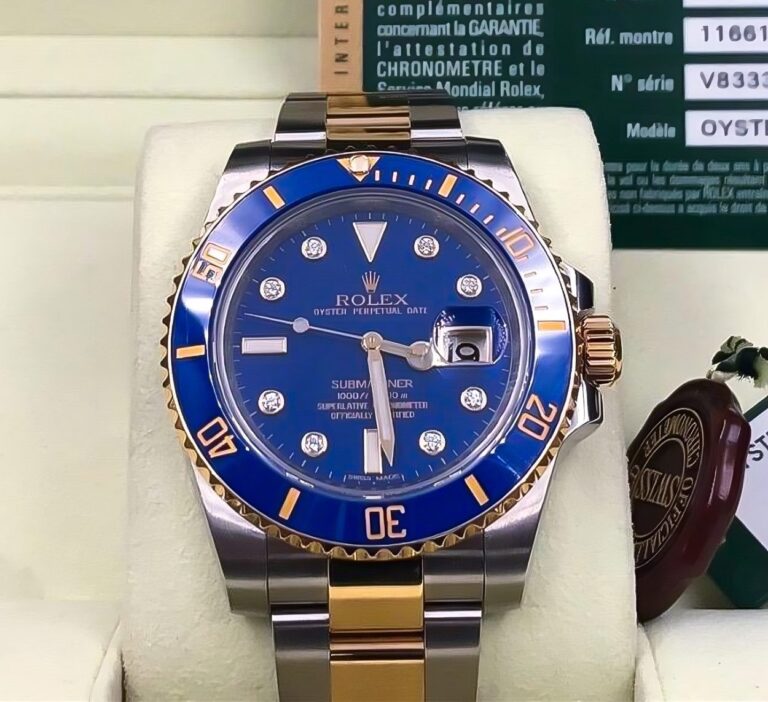
Sell a Watch in San Diego
If you have a valuable antique, vintage, or luxury watch to sell in San Diego, please contact C. Blackburn Jewelers in La Jolla for a free consultation and cash appraisal. Please note that ordinarily we purchase only highly sought-after timepieces with a resale value over $2,000. We pay extremely well for many vintage Rolex watches.
Get in touch with our head watch buyer Carl Blackburn by calling 858-251-3006 or send him a message in the contact form below.
Text Message & Photos:
619-723-8589

